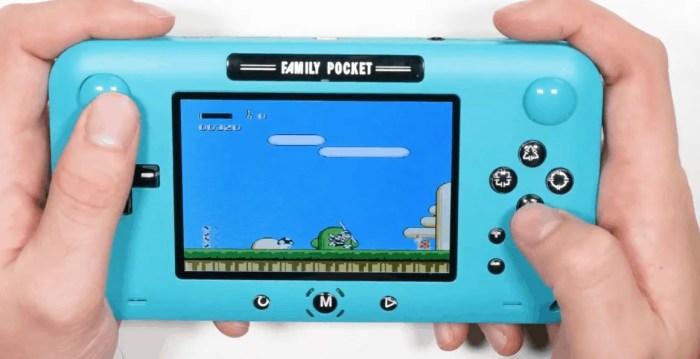Fake video game systems are a growing problem in the gaming industry, and they can pose a serious risk to consumers. These counterfeit consoles are often made with inferior materials and components, and they may not function properly or even be dangerous to use.
In this article, we will discuss the different types of fake video game systems, how to spot them, and the potential risks of using them.
Fake video game systems come in a variety of shapes and sizes. Some of the most common types include:
Overview of Fake Video Game Systems
Fake video game systems are unauthorized or counterfeit versions of popular gaming consoles that mimic the design and functionality of genuine systems. They are often sold at a lower price, attracting unsuspecting consumers seeking affordable gaming options.
The prevalence of fake video game systems has grown significantly in recent years, driven by technological advancements and the rise of online marketplaces. These systems pose a significant threat to the gaming industry, impacting revenue, intellectual property rights, and consumer trust.
Types of Fake Video Game Systems

Hardware Clones
Hardware clones are unauthorized copies of genuine video game consoles. They typically replicate the external design, internal components, and software of the original system.
Software Emulators

Software emulators are programs that allow users to run video game software designed for other platforms on their computers or mobile devices. While not inherently illegal, they can facilitate the use of pirated game ROMs.
Flash Cartridges

Flash cartridges are storage devices that contain pirated game ROMs. They can be inserted into genuine video game consoles, allowing users to play unauthorized games.
Methods of Detecting Fake Video Game Systems
Inspect the Packaging
- Look for poor-quality packaging, misspellings, or grammatical errors.
- Verify the manufacturer’s logo and contact information.
- Check for any signs of tampering or resealing.
Examine the Console

- Compare the console’s design and materials to genuine images.
- Inspect the ports, buttons, and other features for any irregularities.
- Check the serial number and compare it to the manufacturer’s database.
Test the Functionality
- Insert a known genuine game cartridge or disc.
- Observe the system’s performance and look for any glitches or errors.
- Compare the gameplay experience to that of a genuine system.
Consequences of Using Fake Video Game Systems
Legal Implications
- Using fake video game systems may violate copyright laws and intellectual property rights.
- Selling or distributing fake systems can result in criminal charges.
Safety Concerns, Fake video game systems
- Fake video game systems may not meet safety standards, posing risks of electrical shock or overheating.
- Counterfeit components may malfunction or cause damage to genuine consoles.
Poor Gaming Experience
- Fake video game systems often provide an inferior gaming experience, with glitches, compatibility issues, and limited game selection.
- They may lack online connectivity or other essential features.
Prevention and Education
Educate Consumers
- Inform consumers about the risks and consequences of using fake video game systems.
- Provide tips and resources for spotting and avoiding counterfeit products.
Collaborate with Manufacturers
- Encourage manufacturers to implement anti-counterfeiting measures.
- Provide support for enforcement actions against counterfeiters.
Enforce Intellectual Property Laws
- Strengthen intellectual property laws to deter the production and sale of fake video game systems.
- Increase penalties for copyright infringement and counterfeiting.
Questions Often Asked
What are the different types of fake video game systems?
There are a variety of different types of fake video game systems, including:
- Clones: These are consoles that are designed to look and function like a genuine console, but they are actually made with inferior materials and components.
- Emulators: These are software programs that allow you to play games from other consoles on your computer or mobile device.
- Bootlegs: These are unauthorized copies of genuine games that are often sold at a lower price.
How can I spot a fake video game system?
There are a few things you can look for to spot a fake video game system:
- The packaging: Fake video game systems often come in packaging that is poorly made or that has misspellings or grammatical errors.
- The console itself: Fake video game systems are often made with inferior materials and components, and they may not have the same features as a genuine console.
- The games: Fake video game systems may not be able to play genuine games, or they may only be able to play pirated copies.
What are the risks of using a fake video game system?
There are a number of risks associated with using a fake video game system, including:
- The console may not function properly.
- The console may damage your games or other equipment.
- The console may pose a safety hazard.
